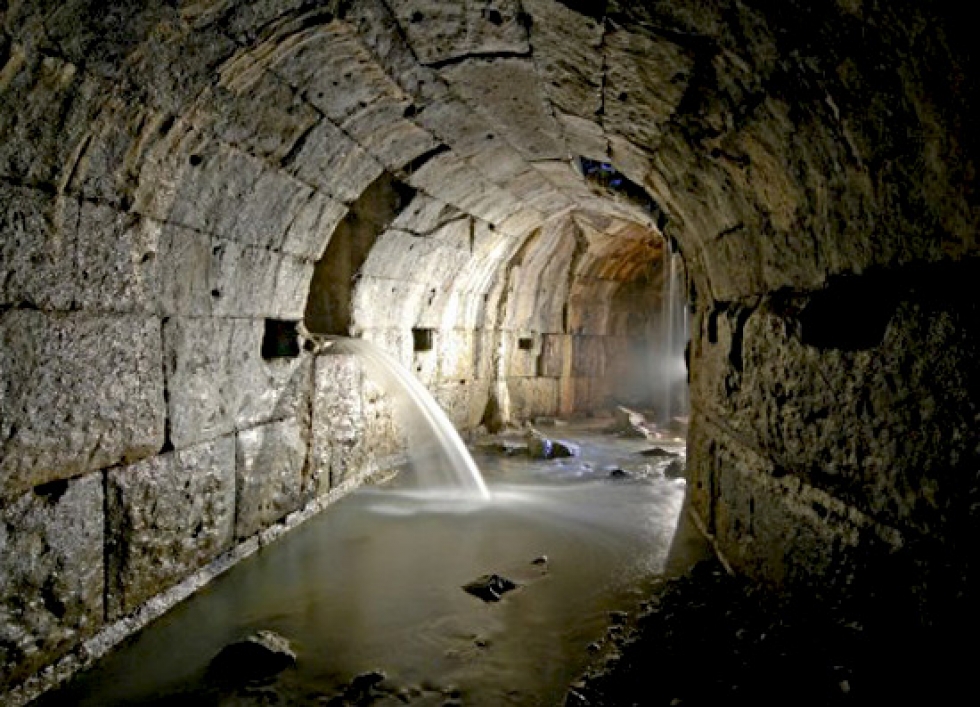It’s hard to say whether the “Cloaca Maxima” is the oldest sewage system in the world of not, but it is by all means the oldest one still working. A considerable part of the sewer track still carries out its functions after 2,600 years; that is why this work is one of the most extraordinary feats of engineering ever done. Initially it was - except for the first section - an uncovered channel starting from the “Suburra” (area where the plebs lived) behind the Forum of Augustus, crossing the Roman Forum, the “Argiletum” (the booksellers road), the “Velabro”, running under the Forum Boarium and flowing into the Tiber by Pons Aemilius, which we call “Broken bridge”. The outlet is still well-preserved and marked by big blocks of tuff that can be easily seen from the Tiber Island. Around the half of the II century B.C. the channel was buried and covered. The size of the channel, entirely characterised by a massive barrel vault, was and still is quite amazing. Its gallery in the first section is 2.70 metres high and more than two metres large, progressively increasing until it reaches the outlet in the Tiber touching a maximum of 3.30 metres in height and almost 4.50 metres in width. It feels like being in a modern subway… astonishing! The materials used for the construction of this sewer track were several, mainly tuff - different kinds of it - but also travertine and cement. We can therefore gather that the “Cloaca Maxima” was restored more than once, in various historical periods, both during the republican and the imperial age. Moreover, it was cleaned various times and underwent numerous maintenance work - the Marcus Agrippa’s in 33 B.C. to cite one -. But why use different kinds of tuff for its construction? There can be two main reasons: the Romans had huge supplies of tuff available - Lazio as a region has large quantities of this volcanic stone - and were aware of the resistance and toughness of the material, which is a crucial feature to build an effective sewage system. The “Cloaca Maxima” was not the only sewerage in ancient Rome. But it surely was the most important and the best maintained. Its main track was 1.500 metres long and had many ramifications. Thanks to its construction unhealthy areas were made inhabitable, as “Velabro” area for example. Testimony of the relevance of this engineering work was the small sacred round shrine that used to be in the Roman Forum between the Basilica Aemilia and the Curia dedicated to “Venus Cloacina”, the goddess in charge of protecting the “Cloaca” and the entire Roman sewer system. Even sewers had a goddess in the ancient Rome!
Cloaca Maxima Group 6
Tanner H
Giuseppe Rosselli





